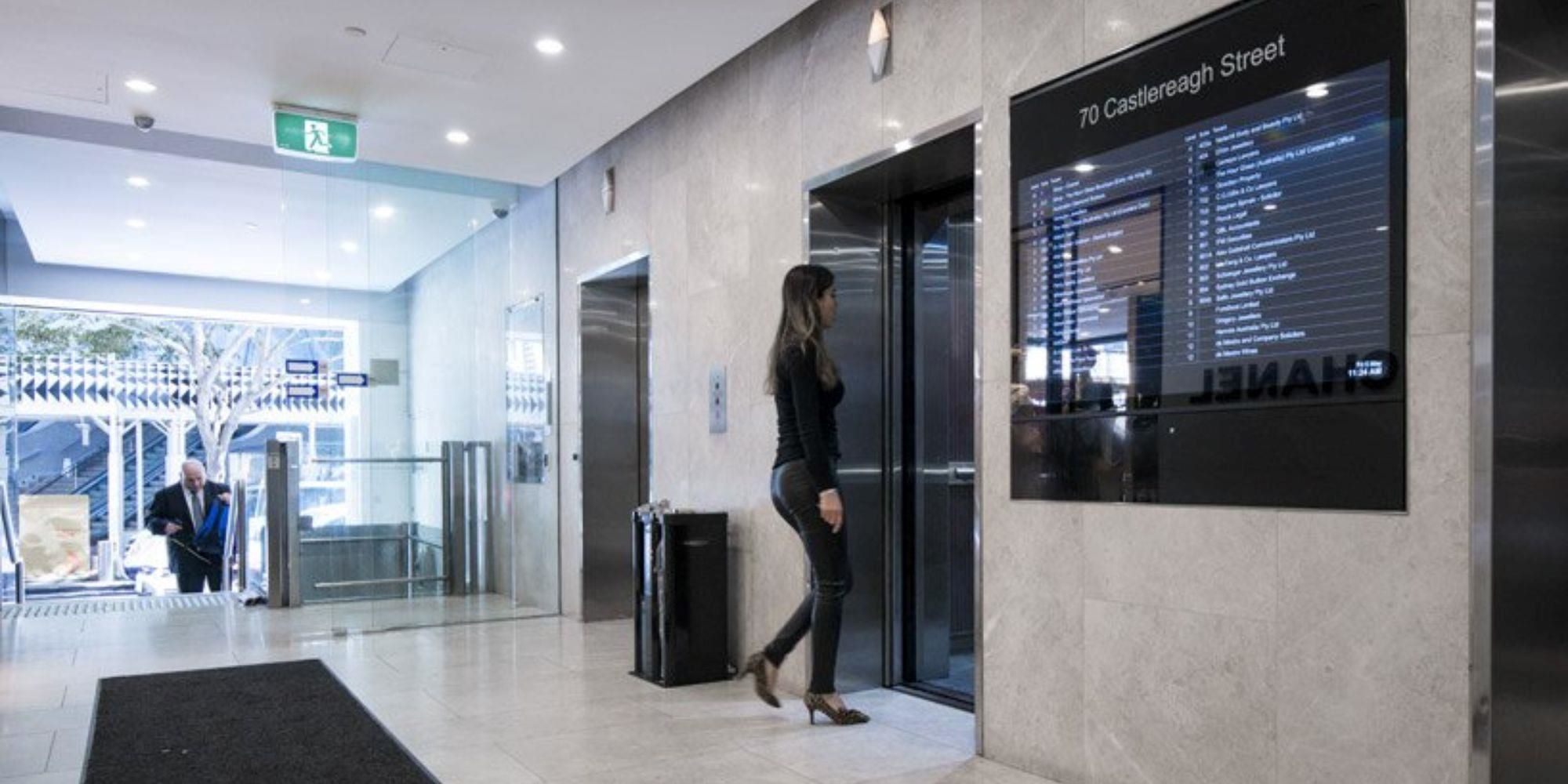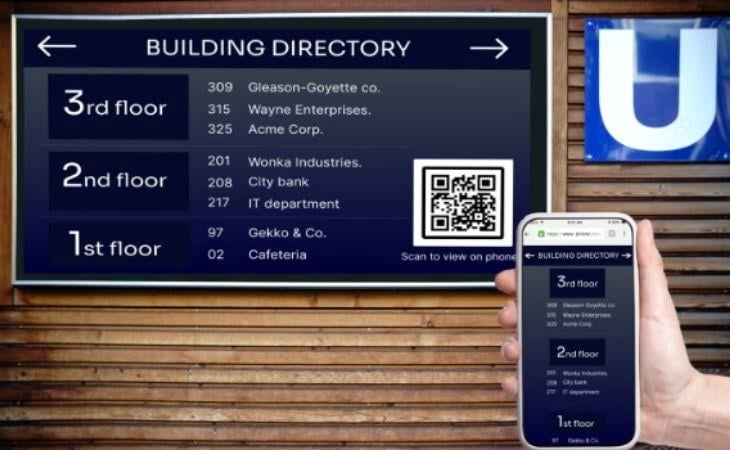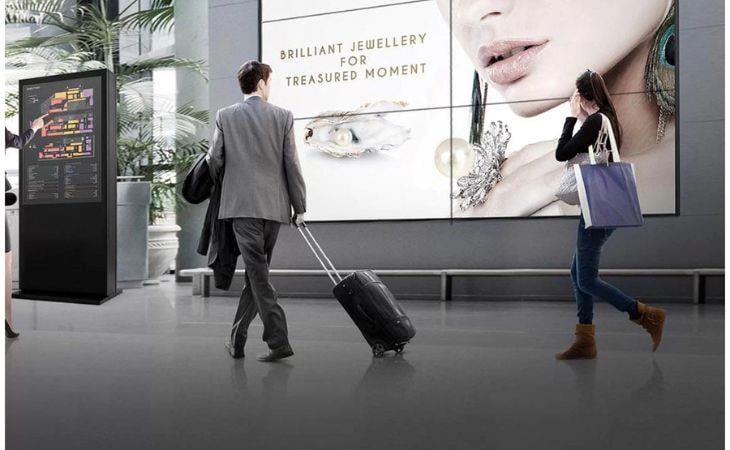
Benefits of Interactive Building Directories | Rise Vision
In today's digitally driven world, digital building directories have become increasingly prevalent in various environments. These innovative systems offer a sophisticated approach to navigating complex structures, providing users with a seamless experience in locating desired destinations within a building.
By blending technology with functionality, interactive building directories offer a glimpse into the future of user-centric design. They bring multifaceted benefits to enhancing user experience, promising efficiency, convenience, and a touch of modernity to traditional wayfinding methods. But what exactly sets these systems apart, and how do they revolutionize user interaction within built environments?
Evolution of Interactive Building Directories
With advancements in technology and the increasing demand for user-friendly navigation tools, the evolution of interactive building directories has transformed the way individuals navigate complex spaces efficiently and effectively.
Gone are the days of static maps and confusing signage; interactive directories offer dynamic, real-time information that adapts to users' needs. A study by the University of Illinois found that buildings with interactive directories experienced a 30% increase in user engagement compared to those without such systems. By providing intuitive interfaces and customizable search options, these directories empower users to quickly locate desired destinations within buildings, saving time and reducing frustration. According to a case study by a commercial real estate firm, properties that implemented interactive building directories saw a 25% reduction in navigation time for visitors, leading to increased satisfaction and productivity.
The evolution of interactive building directories has led to a seamless navigation experience, enhancing user satisfaction and overall productivity. As technology advances, these directories will only become more sophisticated, further improving how people interact with and move within diverse environments.
How Do Digital Building Directories Work?
The operation of digital building directories revolves around their ability to provide users with interactive and intuitive navigation features within complex spaces. These directories typically consist of touchscreen displays that allow users to search for specific locations, services, or amenities within a building.
Users can input their desired destination or browse through a list of options to find relevant information. Once the destination is selected, the directories provide step-by-step directions, highlighting the most efficient route to reach the desired location.
Some advanced directories even offer additional features such as real-time screen-sharing updates on availability, integration with building security systems for access control, and the ability to send directions directly to a mobile device for convenience.
Benefits of Interactive Building Directories in Enhancing User Experience
Interactive building directories significantly improve user experience by providing enhanced navigation and wayfinding capabilities. Users can enjoy an interactive experience that allows for simple exploration of the building, integrating with smart systems and mobile devices for added convenience. Real-time information ensures that users have access to the most up-to-date details, ultimately improving their overall experience within the building.
Enhanced Navigation and Wayfinding
Improving user experience, interactive building directories revolutionize navigation and wayfinding within complex structures. By providing users with real-time information and interactive maps, these directories empower individuals to navigate unfamiliar environments confidently and efficiently.
Users can quickly locate their desired destinations, such as offices, departments, or amenities, saving time and reducing frustration. The interactive nature of these directories allows for personalized routes based on preferences like accessibility or proximity to services.
Clear, intuitive interfaces enhance user engagement, ensuring a smooth navigation experience for all visitors.
Interactive User Experience
Transforming the way users interact with building environments, interactive directories offer an intuitive experience that enhances overall user satisfaction and navigation efficiency.
The intuitive touchscreens or interfaces enable users to search for specific locations, amenities, or services, making the navigation process more efficient and enjoyable. Additionally, interactive directories often offer multi-language support, accessibility features, and detailed information about points of interest catering to diverse users. This user-centric approach ensures that individuals can confidently navigate complex building layouts, ultimately enhancing their overall experience and satisfaction.
Integration with Smart Building Systems
Incorporating interactive building directories into smart building systems enhances efficiency, convenience, and overall user satisfaction within the building environment.
Due to this intelligent technology, users can quickly locate desired destinations within the building by accessing real-time information and optimizing routes through the interactive directory, saving time and reducing frustration. The seamless integration with smart building systems allows users to find their way and access additional building services, such as room booking or facility reservations, all in one centralized platform.
By providing a user-friendly experience that combines navigation assistance with smart building features, interactive directories enhance user satisfaction and contribute to a positive building experience.

Integration with Mobile Devices
To enhance user accessibility and convenience, interactive building directories integrate with mobile devices, providing a streamlined navigation experience within the building environment. By connecting with users' smartphones or tablets, these directories offer personalized directions, real-time updates, and interactive maps that make finding offices, amenities, or points of interest easier than ever.
Users can simply input their desired destination or scan a QR code to receive step-by-step directions right at their fingertips. This integration with mobile devices simplifies wayfinding and caters to the modern, tech-savvy individual who relies on their mobile devices for information and guidance.
Real-Time Information
Enhancing user experience through interactive building directories extends beyond seamless integration with mobile devices, as real-time information plays a pivotal role in providing timely and accurate guidance within the building environment. Real-time information ensures that users can access up-to-date details instantly, enhancing their overall experience and efficiency. Here are three key benefits of real-time information in interactive building directories:
- Instant Updates: Users receive immediate notifications about any changes or updates within the building, ensuring they stay informed at all times.
- Accurate Directions: Real-time information gives users precise directions to their desired locations, reducing confusion and saving time.
- Dynamic Navigation: Users can adjust their routes in real time based on current conditions, optimizing their journey within the building.
Personalized Recommendations
Personalization in interactive building directories elevates user engagement by tailoring recommendations to individual preferences and needs, fostering a more intuitive and efficient navigation experience. By understanding each user's unique requirements, interactive directories can suggest relevant points of interest within the building, such as popular amenities, nearby services, or upcoming events. This tailored approach enhances user satisfaction, saving time and effort in locating desired destinations. Moreover, personalized recommendations can also extend to preferred routes based on factors like accessibility needs or time constraints, ensuring a hassle-free journey for all visitors.
With this customized touch, interactive building directories cater to diverse user needs, creating a more engaging and user-friendly experience for everyone.
Improved Accessibility
Understanding the diverse needs of users, interactive building directories play a critical role in enhancing accessibility and user experience within a building environment. By improving accessibility, these directories allow users to personalize the directory interface based on their specific accessibility requirements, such as adjusting text size or utilizing audio guidance.
Interactive directories can also cater to a wider audience by offering language options, making it easier for users who speak different languages to navigate the building efficiently.
Feedback and Rating Systems
Interactive building directories with feedback and rating systems allow users to share their experiences, rate services, and provide feedback, creating a sense of community involvement and empowerment.
By incorporating real-time updates and personalized recommendations based on user feedback, interactive building directories can enhance user satisfaction and streamline the navigation process. Users benefit from the ability to make informed decisions, find relevant information quickly, and contribute to the improvement of services within the building. This two-way communication fosters a sense of trust and engagement, ultimately leading to a more user-centric and efficient building experience.

Brand Enhancement
Enhancing user experience through interactive building directories offers a unique opportunity.
According to studies, digital signage is remarkably effective, with a 47.7% increase in brand awareness and 84% of retailers considering it more effective than traditional channels. Interactive building directories offer a platform for brands to elevate their presence and effectively engage consumers. They dynamically showcase brand identity, values, and offerings, leaving a lasting impression.
These directories enhance brand image through visual impact, brand consistency, and personalization. Vibrant displays and intuitive interfaces attract users, maintaining brand consistency throughout builds recognition and trust, while personalization fosters a deeper connection and loyalty.
Integration with Mobile Devices
Utilizing mobile devices, users can swiftly access up-to-date building directory information, including directions, points of interest, and event/service updates, all within seconds. This integration enhances user experience by offering personalized and interactive features that cater to users' specific needs and preferences.
With just a few taps on their smartphones, users can navigate complex buildings more efficiently, locate amenities, and discover new services effortlessly. The synergy between interactive building directories and mobile devices empowers users to explore and interact with their surroundings in a more intuitive and engaging way, ultimately enriching their overall experience.
Conclusion
In conclusion, interactive building directories have evolved to offer a user-friendly experience, providing efficient navigation and access to information within a building. By incorporating free digital technology, these directories enhance user experience by providing interactive features, real-time updates, and personalized information.
Such advancement in building directories improves navigation and contributes to a more seamless and engaging user experience within a building environment.
More From Our Blog
-

Screen Sharing for Workplace Collaboration | Rise Vision
Screen-sharing technology has transformed how teams communicate and work together in real-time, regardless of their location. It can make presentations more engaging, support remote work, and speed[…]
Read More -

How to Use PowerPoint for Digital Signage
To create stunning, attention-grabbing, and effective digital signage content, you need the help of content creation and presentation tools. One of the most popular is Microsoft PowerPoint, owing to[…]
Read More -

120 Digital Signage Content Ideas
So…. you decided you would invest in some digital signage software and you need some ideas for ways you can make it stand out. This article is your go-to source for the best digital signage content[…]
Read More
Keep Your Displays Interesting – Pick New Templates Every Week!
Every week, we send template recommendations that will make you look great and improve your audience experience. And the best part, they save up to 16 hours of content creation time every week!
12,300+ Organizations Trust Rise Vision, You Can Too
Schedule a Free Demo
You deserve the #1 all-in-one platform for digital signage, screen sharing, and emergency alerts.



































